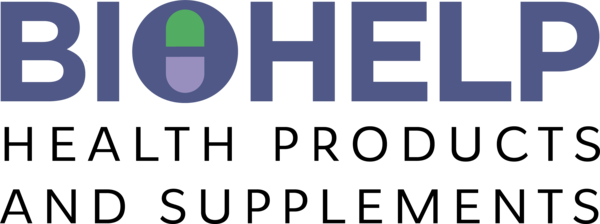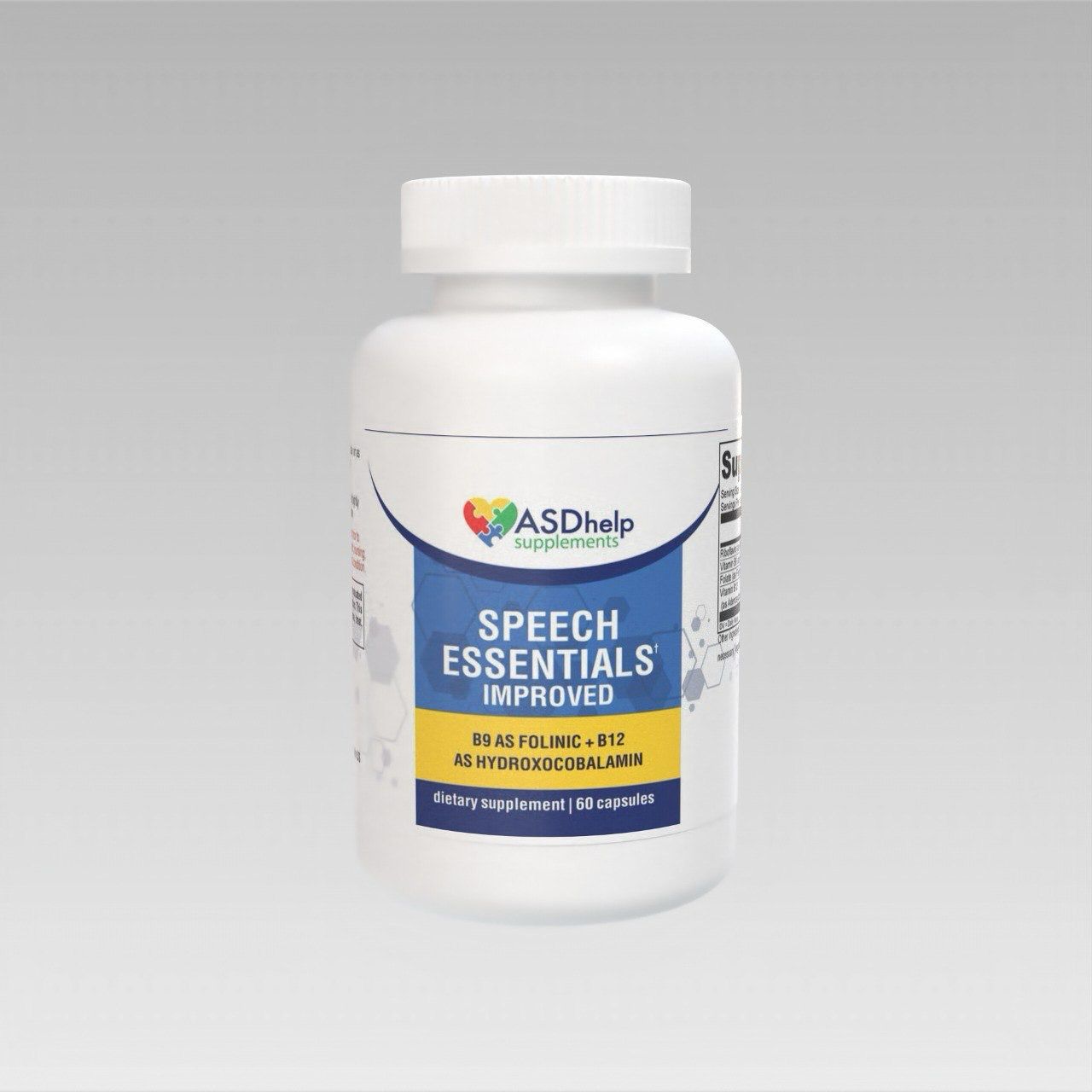

Health products and supplements are an affordable and effective way to ensure you and your loved ones are getting the daily recommended intake of essential vitamins, minerals and other important nutrients necessary for optimal health.
Speech Essentials 60 capsules
1 Capsule Dosage and Administration
Each capsule, according to the conversion formula using DFE, contains 10 mg of the active form of folinic acid.
According to research, the daily dose should not exceed five capsules per day.
Dosage Protocol
• Discontinue any medications that interfere with folate metabolism.
• Begin folinic acid supplementation at 1/5 of a capsule – approximately 0.5 mg/kg per day, divided into two doses.
• If necessary, the dose can be increased to 1–4 mg/kg per day, divided into two doses (maximum of 50 mg per day or up to 5 capsules).
• Take the supplement with or after meals, preferably in the morning or afternoon.
Important Factors
• Avoid supplements containing synthetic folic acid.
• Implement a dairy-free diet.
• Monitor changes in understanding, cognition, and behavior.
• Watch for any potential (negative) side effects.
THE IMPORTANCE OF FOLATES
Folic acid (vitamin B9, also known as folate) is a water-soluble B vitamin that is essential for many physiological systems in the body.
The term folate comes from the Latin word folium, meaning “leaf,” reflecting that the main natural dietary sources of this vitamin are leafy vegetables. However, in modern Western diets, the main source of folate is fortified foods.
Forms and Metabolism of Folates
Folic acid is an inactive, oxidized form of folate compounds.
The primary active form of folate in the body is 5-methyltetrahydrofolate (5-MTHF).
• Folic acid is first converted into dihydrofolate (DHF) and then into tetrahydrofolate (THF) by the enzyme dihydrofolate reductase (DHFR). This reaction requires niacin (vitamin B3) and can be slowed down by certain medications.
• THF is then converted into 5,10-methylene-THF, and subsequently into 5-MTHF by the enzyme methylenetetrahydrofolate reductase (MTHFR).
• Finally, 5-MTHF is reconverted into THF by the enzyme methionine synthase, which depends on the presence of vitamin B12.
In this reaction, 5-MTHF donates a methyl group to homocysteine, forming methionine and regenerating THF.
Role of Folates in the Body
Folate is required for the continuous synthesis of purine and pyrimidine nucleic acids—the building blocks of DNA and RNA.
• DNA stores the genetic code and must be replicated during cell division and reproduction.
• Therefore, folates are crucial during rapid cell division, especially:
• before birth, during embryonic and fetal development, and
• in early childhood, when cells grow and divide rapidly.
Interactions with Other Biochemical Cycles
The folate cycle interacts closely with the methionine cycle and with the production of tetrahydrobiopterin (BH4).
• The methionine cycle is essential for DNA methylation, a process that regulates gene expression.
• BH4 is necessary for the production of nitric oxide (NO), which regulates blood flow, and for the synthesis of several neurotransmitters:
• dopamine,
• serotonin,
• norepinephrine (the precursor of adrenaline).
During the synthesis of neurotransmitters and NO, tetrahydrobiopterin (BH4) is oxidized to dihydrobiopterin (BH2).
To recycle BH2 back into BH4, the conversion of 5-MTHF into THF is required.
Consequences of Folate Deficiency
Folate deficiency has been associated with several disorders, including:
• Anemia – since red blood cells must be continuously produced, low folate levels can lead to a reduction in red blood cell formation.
• During pregnancy – folate deficiency can cause neural tube defects in the developing fetus, such as spina bifida (spinal dysraphism).
CEREBRAL FOLATE DEFICIENCY (CFD) – A RECENTLY IDENTIFIED NEURODEVELOPMENTAL DISORDER
About ten years ago, Ramaekers and colleagues described a new neurodevelopmental disorder called Cerebral Folate Deficiency (CFD).
They observed five patients who developed normally during the first 4–6 months of life but then showed developmental regression and increasing neurological symptoms in the second half of the first year of life, including:
• irritability,
• psychomotor delay,
• ataxia,
• dyskinesia,
• pyramidal signs,
• visual disturbances, and
• epilepsy.
Microcephaly was also noted as an acquired feature.
Interestingly, 5-MTHF levels remained normal in serum and red blood cells, but were reduced in cerebrospinal fluid (CSF).
This condition was named Cerebral Folate Deficiency (CFD) to emphasize the folate deficiency localized within the central nervous system (CNS).
CEREBRAL FOLATE TRANSPORT MECHANISMS
To understand CFD, it’s important to note that the CNS is a protected compartment, and the blood-brain barrier (BBB) strictly regulates the entry of substances into the brain.
For 5-MTHF to cross the BBB, it requires one of two specialized transport systems:
1. Folate Receptor Alpha (FRα, or FR1)
This is the main folate transporter.
• 5-MTHF binds to FRα, and the complex crosses the BBB.
• Once inside, 5-MTHF is released into the CNS, while FRα returns to bind another 5-MTHF molecule.
• This process is energy-dependent (ATP-dependent).
2. Reduced Folate Carrier (RFC)
The second transport system, RFC, has a lower affinity for 5-MTHF but a higher affinity for 5-formyltetrahydrofolate (folinic acid or leucovorin).
• RFC also facilitates the transport of 5-MTHF into neurons once it has entered the CNS.
Additional Pathway
When folate concentrations in the blood are sufficiently high, some diffusion through the BBB can occur even without transporters.
CAUSES OF CEREBRAL FOLATE DEFICIENCY
The Ramaekers research group investigated the FRα gene to determine whether mutations could explain impaired 5-MTHF transport into the CNS. No such mutations were found.
In 2004, Ramaekers and Blau expanded the study to include 20 patients and again found no FRα mutations, but the receptor itself was nonfunctional in the CSF.
This led to the hypothesis of autoantibodies against FRα, which bind to the receptor and block folate transport.
In 2005, Ramaekers and colleagues discovered blocking autoantibodies to FRα in the serum of 25 out of 28 children with CFD. These antibodies were absent in the control group.
CFD AND MITOCHONDRIAL DYSFUNCTION
In 2006, a report linked CFD with mitochondrial disease in a child with an incomplete form of Kearns-Sayre syndrome.
Subsequent studies confirmed that CFD may be associated with several mitochondrial dysfunctions, including:
• complex I deficiency,
• Alpers disease,
• complex IV hyperfunction,
and other mitochondrial disorders in both children and adults.
In most of these cases, autoantibodies to FRα were absent, suggesting that ATP deficiency due to mitochondrial dysfunction may impair 5-MTHF transport into the CNS.
CFD AND AUTISM SPECTRUM DISORDERS (ASD)
• In one cohort of 20 CFD patients, 7 were diagnosed with autism spectrum disorder (ASD).
• In an earlier study, 5 of 28 patients with FRα autoantibodies had low-functioning autism with neurological symptoms.
• Later studies identified additional cases of CFD among children with idiopathic (non-genetic) autism.
These findings suggest that early-onset, low-functioning autism with neurological features may represent a subtype of autism associated with CFD.
Notably, children with Rett syndrome—also classified under ASD—were found to have low 5-MTHF levels in cerebrospinal fluid.
AUTOANTIBODIES AND OTHER CONTRIBUTING FACTORS
• Only some children with CFD have detectable FRα autoantibodies.
• In others, including those with autism or Rett syndrome, such antibodies are absent.
This implies that other mechanisms besides autoimmunity may contribute to CFD—one of which is mitochondrial dysfunction.
Indeed:
• Mitochondrial disease often coexists with CFD.
• It is more prevalent in children with idiopathic autism than in the general population.
• Studies link mitochondrial dysfunction to regressive forms of autism seen in CFD.
• Rett syndrome is also associated with mitochondrial abnormalities.
Even in the absence of a diagnosable mitochondrial disease, children with idiopathic autism may have partial mitochondrial dysfunction, which can contribute to the development of CFD.
Why Choose Us?
Our mission is to help you enjoy optimum health through proper nutrition! Good health is all about looking your best and having the energy and stamina to do the things you love. It's difficult to be productive and happy if you're sick or run down all the time. We believe strongly that certain supplements should be at the core of your health program.
We are committed to providing only high quality products. Many brands will never be sold in our stores due to concerns we have with their quality control or business practices.
About Us

BioHelp is a family owned and operated nutraceutical distribution company. BioHelp offers a wide range of professional only product lines, to everyone who's main goal is to achieve a better quality of life, and we take pride in our ability to educate our clients on product selection. We are your personal concierge to the nutraceutical world. With the growing awareness of food allergies, our staff is able to provide support on products that would best suit the best. Make sure your body is getting all the nutrition it needs to stay healthy and keep you strong. BioHelp will steer you in the right direction and ensure your supplements fit your goals and lifestyle.
Registered to Echidna LLC, TIN 460522441
1600 148th Avenue Southeast,
Bellevue, WA 98007
